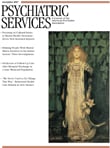The title of this book evokes the commission that one of this hefty volume's heroes, architect Joan Herlihy, hopes to get for her architectural firm. A billionaire wants to build a private memorial on 400 private acres in Napa Valley as a tribute to his brother who died in the 2004 Indian Ocean tsunami. The book, using a style similar to modern movie techniques, intertwines snapshots or pieces of action from the stories of Joan, her mother Marjorie, her brother Chester, and her father Ray, who abandoned the family long ago.
We follow Joan through her affair with her client—although one of her rules was never to become involved with clients—an incredibly rich, smart billionaire who showers her with expensive gifts. We also watch her mother being scammed by an unbelievably smart group of crooks, who are able to clean out all her accounts and even get her jewelry. In the meantime, Chester is suing a movie company for a small injury resulting from a prank. Finally, Ray is getting money from a lawsuit against the city, after the police mistakenly raid his house and shoot his dog.
The individual stories are heading toward individual catastrophes. Joan's firm does not get the commission. Marjorie loses all her possessions, and even her house is set on fire. In an almost psychedelic ending, Chester ends up in India with a girlfriend named Laxmi—her hippie father "was a failed Jewish poet who'd hung with Ginsburg during the latter's early 60s Benares sojourns." Yet, as in a fairy tale, Marjorie buys a winning lottery ticket and Joan, who is pregnant with the married billionaire's baby, gets a hefty sum from the father-to-be to "be quiet about the paternity." The future looks brighter, and wishes for the American dream are back.
The book mixes many things—sex, art, movies, TV, lawsuits, money, and money scams—like some television shows do. The writing almost evokes a CNN screen that is crammed with too many facts. The writing style could be perceived as impressive or trying to impress. For example, Wagner writes, "But LA, like everything else, was being digitized, devoured, and decoded, memorialized like some newfangled karma/chimera/camera chameleon." Or the description of the billionaire's plan to build a "bright lit ballroom that was to be a replica of Moscow Metro's Komsomolskaya station, complete with subway cars as lounges."
Maybe this book is a picture of modern California or even the entire United States. I hope not. Some may find it to be an interesting and entertaining reading. But as for the masterpiece the cover flap claims it to be, it is not.

